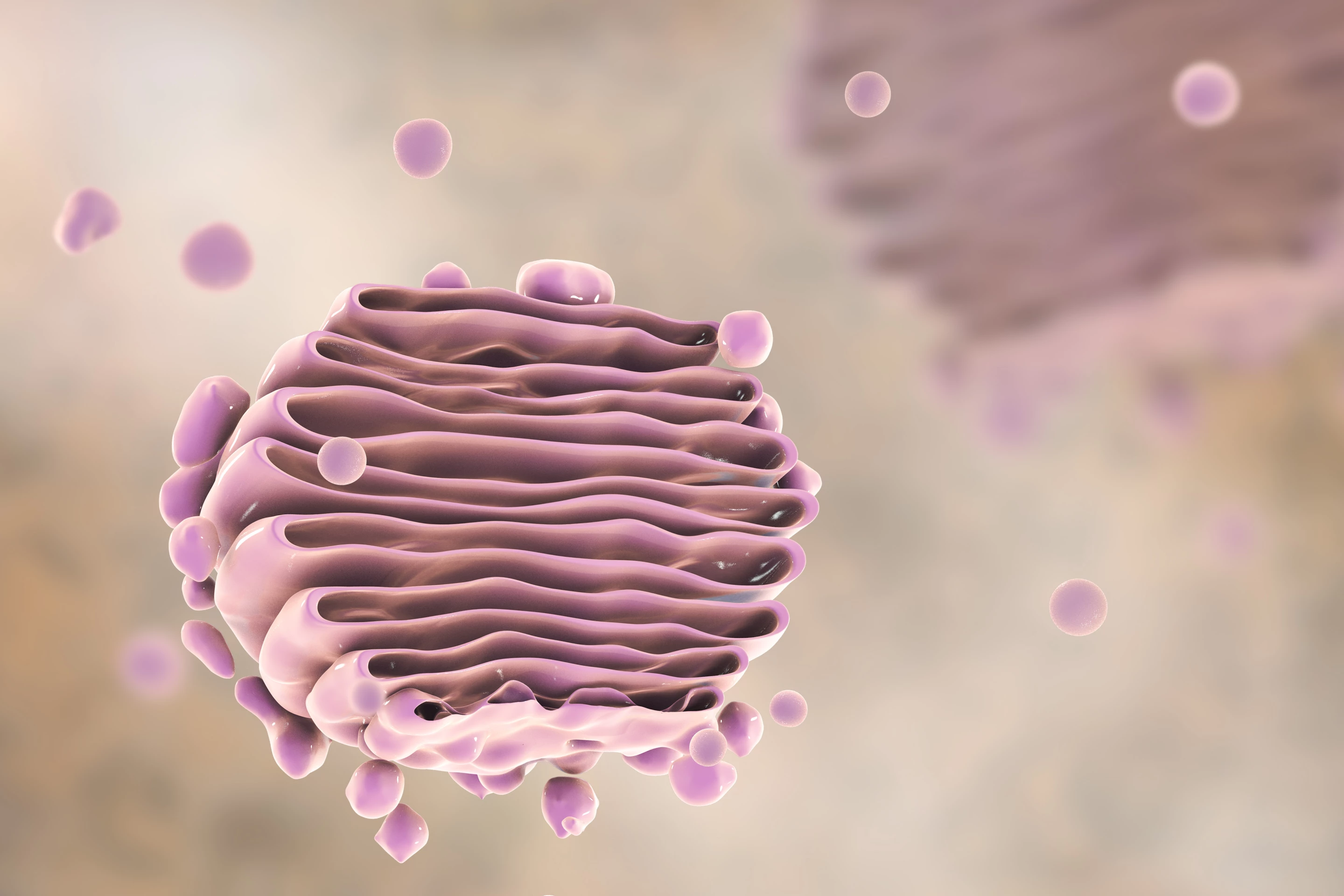Scientists have discovered a new contender in the quest to hack the human aging process, and it’s a little-studied protein within a cell structure that also doesn’t get a lot of airtime in research despite being one of the first organelles identified more than a century ago.
The Golgi apparatus, also known as the Golgi body and Golgi complex (much to the chagrin of biology students the world over), is an odd-looking organelle resembling folded pasta sheets or layers of icing. But it has an important role within complex plant and animal cells, processing and packaging proteins and lipids, before they’re transported to other parts of the cell or secreted.
It was a surprise find for Italian biologist Camillo Golgi in 1898, who was researching the nervous system at the time, so it’s fitting that University of California Riverside (UCR) scientists also stumbled across a particular aspect of the organelle in their study on plant stressors – and it’s one that holds great promise for preserving cell longevity.
“For us, this finding is a big deal,” said study co-author Katie Dehesh, professor of molecular biochemistry at UCR. “For the first time, we have defined the profound importance of an organelle in the cell that was not previously implicated in the process of aging.”

Initially studying how thale cress (Arabidopsis thaliana) plant cells control responses to stressors such as infection and poor light, the researchers found that the Golgi apparatus, and a key protein within it, played a large role in cell survival when exposed to external stress.
Conserved oligometric Golgi (COG) protein help the Golgi apparatus attach sugars (carbohydrates) to other proteins and lipids before moving these packages on. This process, glycosylation, is critical for cell function and many biological processes, such as protein folding and adaptive immune response function.
“Golgi are like the post office of the cell,” said lead author Heeseung Choi, a researcher in the Botany and Plant Sciences Department at UCR. “They package and send out proteins and lipids to where they’re needed. A damaged Golgi can create confusion and trouble in the cell’s activities, affecting how the cell works and stays healthy.”
Keeping with the analogy, the researchers say that the COG protein is the postal worker, overseeing the movement of small sac ‘envelopes’ that move other molecules around the cell.
Focusing on COG, the researchers modified plants to be unable to produce the protein naturally. While the plants grew normally in optimal conditions, they rapidly went downhill when deprived of light so they are unable to convert sunlight to sugar. In fact, the COG-less plants wilted, yellowed and looked close to death three times quicker than unmodified specimens with the same light deprivation.
“In the dark, the COG mutants showed signs of aging that typically appear in wild, unmodified plants around day nine,” Choi said. “But in the mutants, these signs manifested in just three days,”
However, reinstating the plant’s ability to produce COG, their symptoms cleared up and they resembled the ‘normal’ specimens. Dehesh said it was “like nothing happened to them once we reversed the mutation.”
“These responses highlight the critical importance of the COG protein and normal Golgi function in stress management,” Choi added.
What does that have to do with us? While plant cells have obvious differences to those of animals, all of us with complex – eukaryotic – cells have a Golgi apparatus ‘post office’ within each one.
Previous research has found that malfunctions in the human COG complex, made up of eight COG protein subunits, significantly impacts crucial biological roles such as glycosylation, protein sorting and overall Golgi apparatus workings. Golgi glycosylation malfunction and dysregulation has also been implicated in the proliferation of cancer cells and disease progression.
The researchers now plan to look at the impact of disruption to this pathway in human cells, and its potential association with aging and the impact of stress. Potentially, targeted therapies could bolster cell health to shield against stressors that can cause premature aging.
“Not only does our research advance our knowledge about how plants age, but it could also provide crucial clues about aging in humans,” Dehesh said. “When the COG protein complex doesn't work properly, it might make our cells age faster, just like what we saw in plants when they lacked light. This breakthrough could have far-reaching implications for the study of aging and age-related diseases.”
The study was published in the journal Nature Plants.






